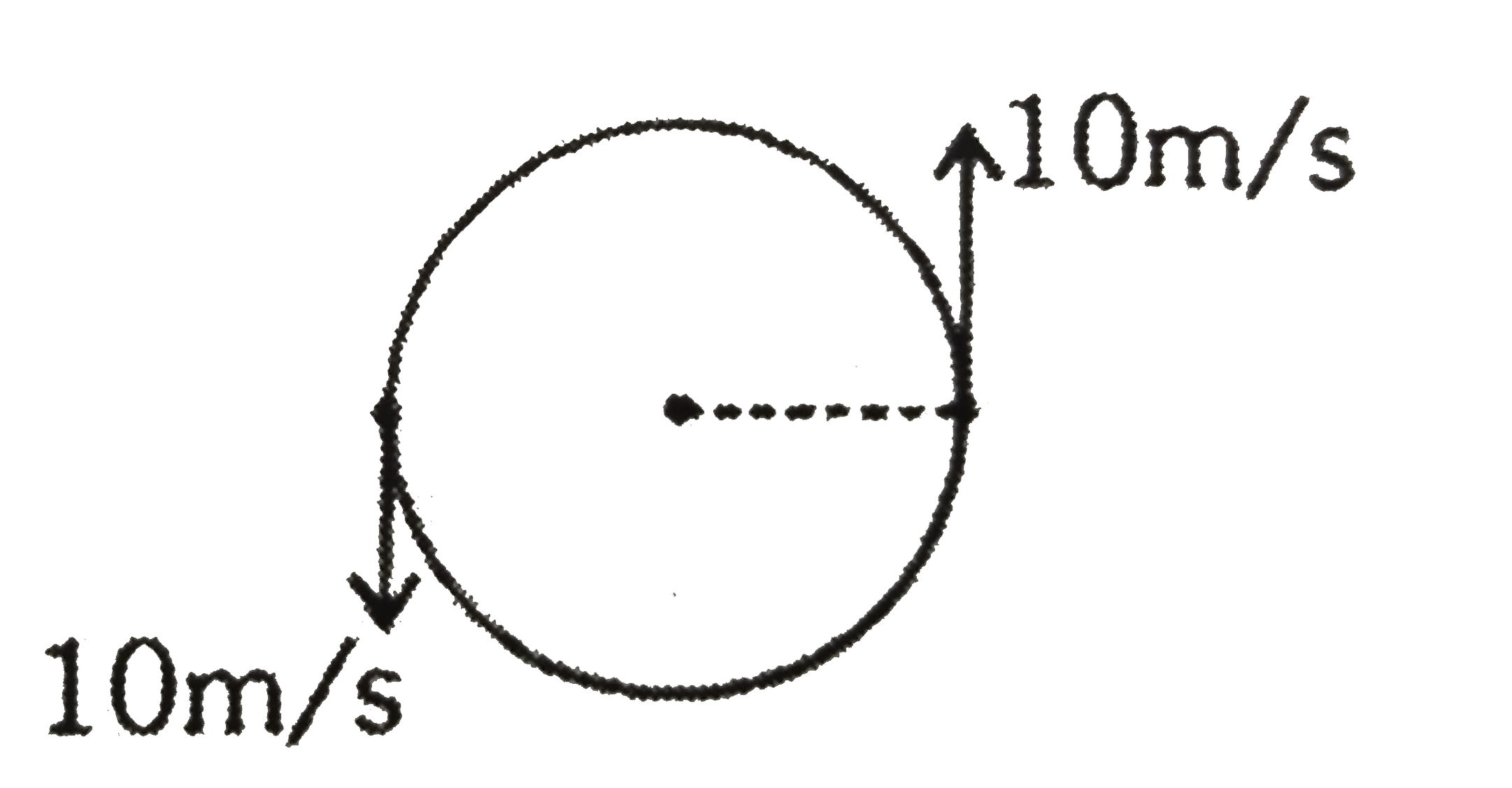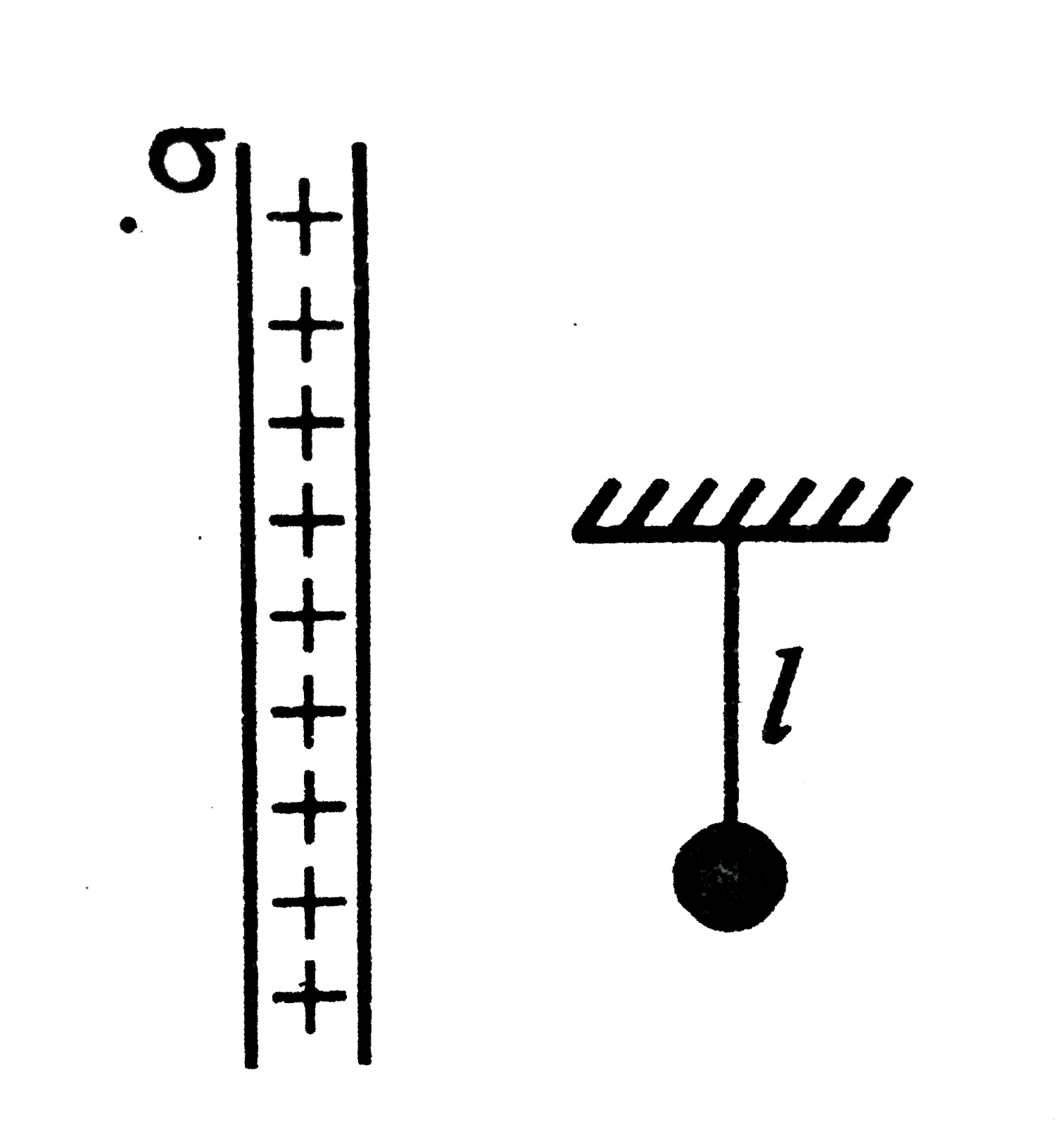A particle of mass 2 kg moves on a circular path with constant speed 10 m/ s . Find change in speed and magnitude of change in velocity. Whan particle completes half revolution. Solution in Gujrati
Change in speed
Δv=10−10=0
Change in velocity
Δ→v=→vl−→vi
=10ˆj−(−10ˆj)=20ˆj
Magnitude |Δ→v|=20m/s

Topper's Solved these Questions
- KINEMATICS (MOTION ALONG A STRAIGHT LINE AND MOTION IN A PLANE)BOOK - ALLEN CHAPTER - KINEMATICS (MOTION ALONG A STRAIGHT LINE AND MOTION IN A PLANE)EXERCISE - BEGINNER S BOX-3
2 Videos
- KINEMATICS (MOTION ALONG A STRAIGHT LINE AND MOTION IN A PLANE)BOOK - ALLEN CHAPTER - KINEMATICS (MOTION ALONG A STRAIGHT LINE AND MOTION IN A PLANE)EXERCISE - BEGINNER S BOX-4
6 Videos
- KINEMATICS (MOTION ALONG A STRAIGHT LINE AND MOTION IN A PLANE)BOOK - ALLEN CHAPTER - KINEMATICS (MOTION ALONG A STRAIGHT LINE AND MOTION IN A PLANE)EXERCISE - BEGINNER S BOX-1
6 Videos
- KINEMATICSBOOK - ALLEN CHAPTER - KINEMATICSEXERCISE - EXERCISE-2
89 Videos
- MISCELLANEOUSBOOK - ALLEN CHAPTER - MISCELLANEOUSEXERCISE - Question
1 Videos
Similar Questions
A particle is moving along a circuilar path of radius 5m. And with uniform speed 5 m/s. What will be the average acceleration when the particle completes half revolution:-
View SolutionA particle starts from the rest, moves with constant acceleration for 15s. If it covers s1 distance in first 5s then distance s2 in next 10s, then find the relation between s1&s2.
View SolutionA particle moves on a circular path of radius 'r'. It completes one revolution in 40s. Calculate distances displacement in 2 min 20 s.
View SolutionA student performs an experiment to determine how the range of a ball depends on the velocity with which it is projected. The "range" is the distance between the points where the ball lends and from where it was projected, assuming it lands at the same height from which it was projected. It each trial, the student uses the same baseball, and launches it at the same angle. Table shows the experimental results.
∣∣ ∣ ∣ ∣ ∣ ∣∣TrailLaunch speed(m/s)Range(m)110822031.833070.7440122.5∣∣ ∣ ∣ ∣ ∣ ∣∣
Based on this data, the student then hypothesizes that the range, R, depends on the initial speed v0 according to the following equation : R=Cvn0, where C is a constant and n is another constant.
Based on this data, the best guess for the value of n is :-
View SolutionA simple pendulum of length l and bob mass m is hanging in front of a large nonconducting sheet having surface charge density σ. If suddenly a charge +q is given to the bob & it is released from the position shown in figure. Find the maximum angle through which the string is deflected from vertical .
 .
.
View SolutionA particle is moving along a circular path with uniform speed. Through what angle does its angular velocity change when it completes half of the circular path ?
View SolutionA particle is moving along a circular path with uniform speed. Through what angle does its angular velocity change when it completes half of the circular path?
View SolutionA particle of mass 2 kg moves on a circular path with constant speed 10 m/ s . Find change in speed and magnitude of change in velocity. Whan particle completes half revolution.
View SolutionA particle moves on circular path of radius 5 m with constant speed 5 m/s. Find the magnitude of its average acceleration when it completes half revolution.
View SolutionIf a particle is moving with uniform velocity 20 m//s on a circular track of radius 10 m, then the magnitude of change in velocity in half revolution will be
View SolutionA particles is moving along a circular path of radius 5 m , moving with a uniform speed of 5ms−1 . What will be the avetage acceleration, Whan the particle completes half revolution?
View SolutionA particle is moving on a circular path with constant speed v. The magnitude of the change in its velocity after it has described an angle of 90^(@) is :
View SolutionA particle of mass m moves with constant speed v on a circular path of radius r. Find magnitude of average force on it in half revolution.
View SolutionA particle of mass 2 kg is moving in circular path with constant speed 20 m/s. The magnitude of change in velocity when particle travels from A to P will be
View Solutionएक 2 kg का पिण्ड वृत्ताकार मार्ग पर स्थिर चाल 10 m/s से गतिमान है जब पिण्ड अर्द्ध चक्र पूर्ण करता है तो चाल में परिवर्तन तथा वेग में परिवर्तन का परिमाण ज्ञात करो।
View SolutionA particle is moving on a circular path of radius 10m with uniform speed of 4ms−1.The magnitude of change in velocity of particle when it completes a semi circular path is
View Solution
